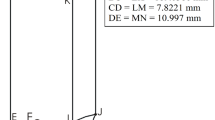Abstract
Bench tests have been used to screen lubricants and additives for industrial fluids in machinery applications for a long time. As the cost of engine testing increases dramatically, the need for simple laboratory bench tests increases. Bench tests simulate a particular aspect of the engine operation such as oxidation or wear, but the engine operation blends both mechanical, chemical, and combustion processes together and allows these parameters to interact freely. There are many bench tests providing a measure of oxidation stability under simulated conditions. For a given application, while the generic aspects of the lubricant degradation mechanism may be similar, environmental factors such as oxygen availability, the presence of specific metals (catalytic effects), and residence times of the oil at high-temperature regions may be specific to that application. Universal bench-test procedures that can predict oxidation stability therefore are not feasible. As described in part I of this paper, a computer simulation program has been developed combining a chemical kinetic model and a finite-difference program to simulate the engine operating conditions to predict lubricant performance in a diesel engine. This paper describes the bench-test procedures used to determine the kinetic constants used in the kinetic model to describe the lubricant degradation processes. The bench tests are specifically designed for the determination of kinetic constants in general for a particular reaction path but take into account the particular environmental factors intrinsic in the Caterpillar 1K engine dynamometer test.
Similar content being viewed by others
References
S. M. Hsu, Lubr. Eng. 37(12) (1981) 722.
S. M. Hsu, A. L. Cummings and D. B. Clark, SAE 821252, SAE SP-526, (Base Oils for Automotive Lubricants, 1982) 127.
R. S. Gates and S. M. Hsu, Lubr. Eng. 39(9) (1983) 561.
S. M. Hsu and A. L. Cummings, SAE 831682, SAE SP-558, Lubricant and Additive Effects on Engine Wear, 1983 51.
R. S. Gates and S. M. Hsu, Lubr. Eng. 40(1), 1984, 27.
C. S. Ku and S. M. Hsu, Lubr. Eng. 40(2) (1984) 75.
C. S. Ku, P. T. Pei and S. M. Hsu, (SAE 902121, SAE Warrendale, PA 1990).
J. M. Perez, P. T. Pei, Y. Zhang and S. M. Hsu, (SAE 910750, SAE Warrendale, PA 1991).
Y. Zhang, P. T. Pei, J. M. Perez and S. M. Hsu, Lubr. Eng. 48(3) (1992) 189.
Y. Zhang, J. M. Perez, P. T. Pei and S. M. Hsu, Lubr. Eng. 48(3) (1992) 221.
J. X. Sun, P. T. Pei, Z. S. Hu and S. M. Hsu, Lubr. Eng. 54(5) (1998) 12.
J. M. Perez, F. A. Kelly, E. E. Klaus and V. Bogrodian, (SAE paper no. 872028, Toronto, Canada, 1987).
S. K. Naidu, E. E. Klaus and J. L. Duda, Ind. Eng. Chem. Prod. Res. Dev. 25 (1986) 596.
F. E. Lockwood, E. E. Klaus and J. L. Duda, ASLE Trans. 24(2) (1981), 276.
J. R. Barnes and J. C. Bell, Lubr. Eng. 45(9) (1989) 549.
Author information
Authors and Affiliations
Rights and permissions
About this article
Cite this article
Hsu, S.M., Chen, CI. A Chemical Kinetics Model to Predict Diesel Engine Performance. Part II. Bench-Test Procedures. Tribology Letters 14, 91–97 (2003). https://doi.org/10.1023/A:1021700219535
Issue Date:
DOI: https://doi.org/10.1023/A:1021700219535




